Introduction
Mobile E-Commerce, often referred to as M-Commerce, is revolutionizing the way consumers buy and sell goods and services through mobile devices like smartphones and tablets. This innovative digital commerce format allows users to shop via mobile applications or specially optimized web browsers, providing a seamless and convenient shopping experience. With the proliferation of mobile devices, M-Commerce has become a substantial subset of the broader e-commerce landscape, enabling transactions and shopping on-the-go.
Significant advancements in mobile billing and payment technologies, such as sound wave-based payments and digital wallets, are driving the growth of this sector, particularly in emerging economies. However, this expansion is not without challenges, including security concerns and data breaches. The COVID-19 pandemic has further accelerated the demand for contactless payments, highlighting the necessity for robust security measures.
Key industry segments encompass various payment types like NFC and QR-based payments, with major markets across North America, Europe, Asia Pacific, Latin America, and the Middle East & Africa. Prominent industry players include Ericsson, Google, IBM, Mastercard, PayPal, SAP, and Visa.
The article explores the dynamic landscape of Mobile E-Commerce, detailing its definition, key features, benefits, current trends, challenges, and its pivotal role in modern retail. By examining industry examples and statistical projections, it provides a comprehensive overview of how M-Commerce is shaping the future of shopping behavior and consumer engagement.
Definition of Mobile E-Commerce
E-Commerce on portable devices, or M-Commerce, refers to the buying and selling of goods and services through gadgets such as smartphones and tablets. This digital commerce format enables consumers to participate in purchasing activities through applications or web browsers specifically tailored for handheld devices. 'The convenience and ubiquity of portable devices have propelled M-Commerce into a significant subset of the broader e-commerce landscape, enabling seamless transactions and shopping experiences on-the-go.'.
Mobile billing has gained traction, simplifying payments without the need for cash or cards. 'The wireless payments sector is anticipated to expand, fueled by advancements such as sound wave-based transactions and the increase of smartphones, particularly in developing economies.'. However, security concerns and high-profile data breaches may impede this growth. The COVID-19 pandemic has accelerated the demand for contactless payments, further boosting the market.
Key industry segments include various payment types like NFC, QR-based, and online digital payments, with significant geographical markets spanning North America, Europe, Asia Pacific, Latin America, and the Middle East & Africa. Notable players in the fragmented M-Commerce market include Ericsson, Gemalto, Google, IBM, Mastercard, PayPal, SAP, and Visa.
Warrior, a leading sports nutrition brand, revamped its mobile marketing strategy to meet its ambitious growth targets. They leveraged SMS marketing to reach a broad audience efficiently, fostering personalized communications to enhance customer loyalty. Partnering with Attentive, Warrior analyzed shopper behavior to create targeted marketing cohorts, driving sales and customer engagement.
'The combination of tangible and virtual retail interactions, referred to as 'phygital,' has become crucial, especially after COVID.'. Consumers now anticipate a smooth interaction across all channels, whether online or in-store, driven by the need for convenience and immediacy. This trend is supported by recent statistics, with US eCommerce sales reaching $579 billion in the first half of 2024, projected to hit $1.26 trillion by year-end.
Ultimately, M-Commerce provides a unique perspective on the future of purchasing behavior, empowering businesses to adjust to changing consumer preferences and technological advancements.
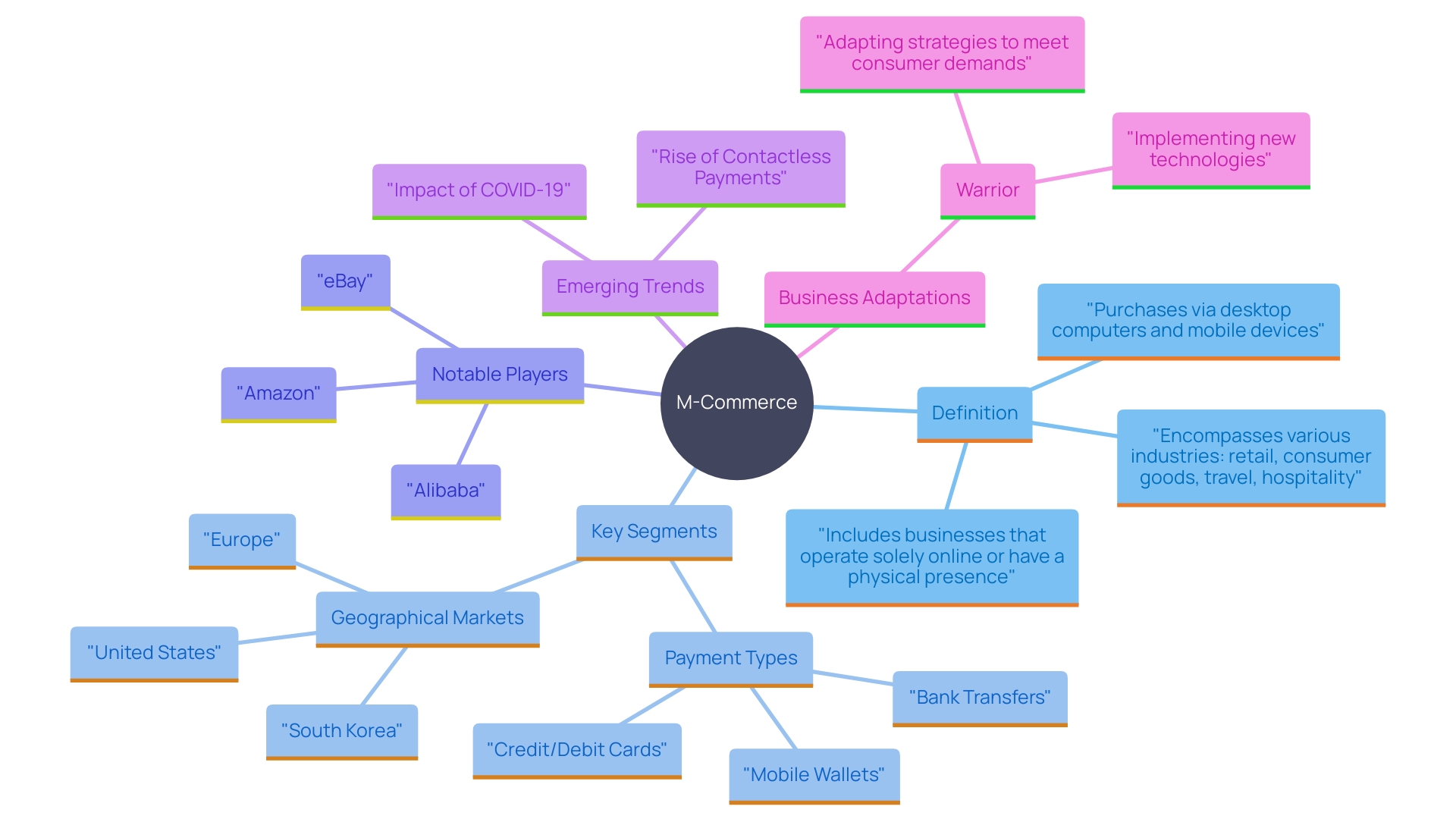
Key Features of Mobile E-Commerce
Mobile E-Commerce has transformed the purchasing process through several essential attributes. Mobile-optimized websites and intuitive apps are at the forefront, ensuring seamless navigation and a user-friendly interface. Progressive Web Apps (PWAs) have gained traction, providing a mix of web and application advantages, enabling brands to connect with a wider audience. Location-based services customize the purchasing journey, while mobile payment alternatives, such as digital wallets, streamline transactions.
Push notifications play a critical role in keeping customers engaged by delivering timely promotions. Social media integration enables users to share their shopping activities and make purchases directly through platforms like Instagram and Facebook, broadening the scope of customer interaction.
The adoption of all-in-one platforms is another significant advancement, merging various retail management systems into a single interface. This holistic approach enhances operational efficiency and provides a comprehensive business overview, leading to better decision-making and improved customer experiences. As retail technology continues to evolve, these innovations are set to redefine the future of M-Commerce.
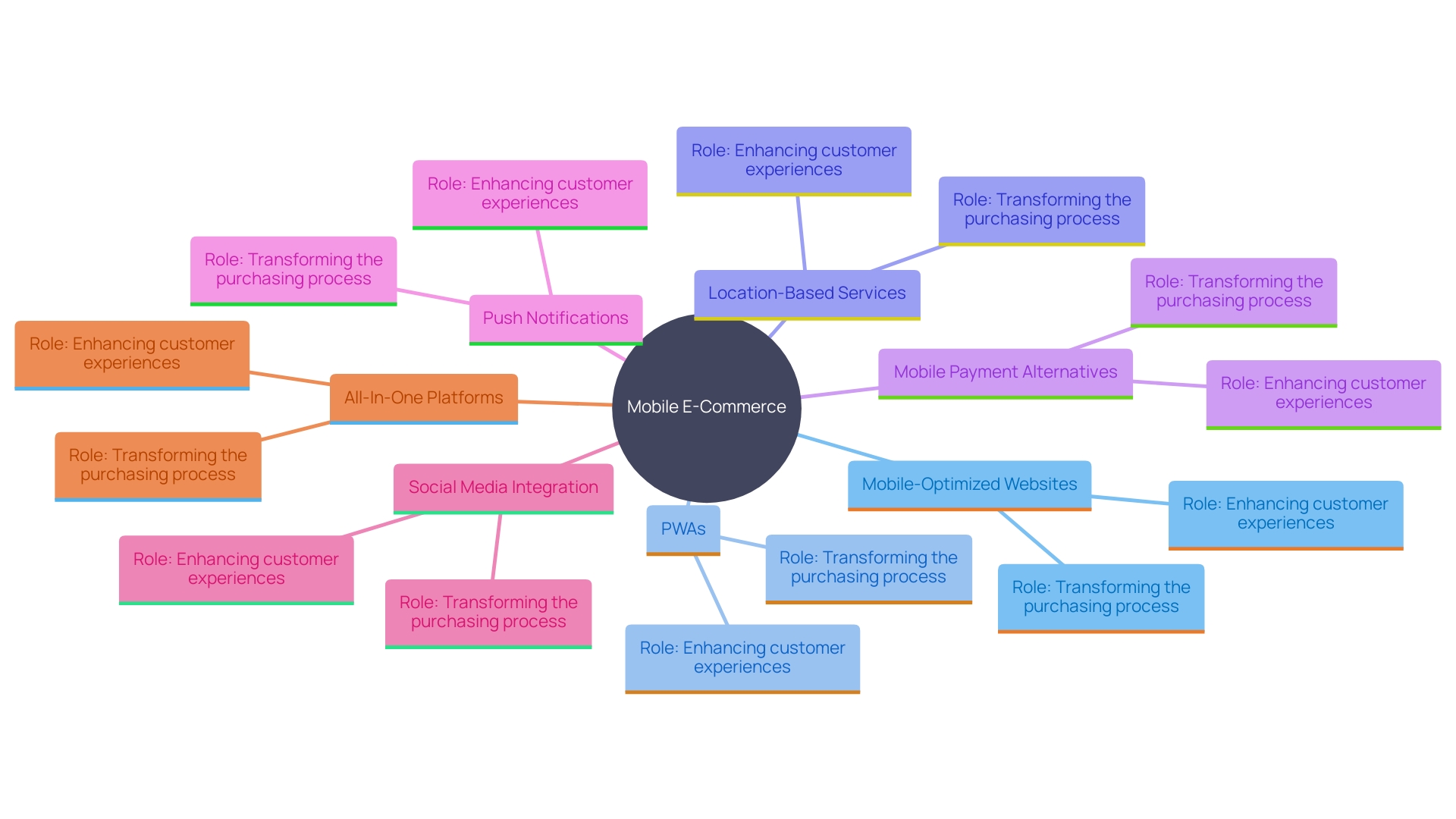
Benefits of Mobile E-Commerce
The benefits of Mobile E-Commerce are considerable for both buyers and businesses. For consumers, M-Commerce provides unmatched convenience, allowing purchases anytime and anywhere. Personalized suggestions derived from browsing history, convenient access to reviews, and smooth product comparisons improve the shopping journey. 'Keith Kirkpatrick, research director at The Futurum Group, emphasizes the significance of 'phygital' interactions, where customers order items on their phones and collect them in-store, merging physical and digital channels for optimal efficiency.'.
For businesses, M-Commerce unlocks new sales channels and allows for targeted marketing through customer data analysis. According to recent statistics, the United States retail eCommerce sales reached $579 billion in the first half of 2024, with projections to hit $1.26 trillion by the end of the year. This swift growth emphasizes the necessity for businesses to utilize portable platforms to expand their reach and enhance customer engagement. The opening of autonomous stores, like føtex's AiFi-powered location in Denmark, exemplifies how technology can innovate retail experiences. By integrating interactive features and real-time feedback, businesses can foster stronger customer relationships and stay competitive in a fast-evolving market.
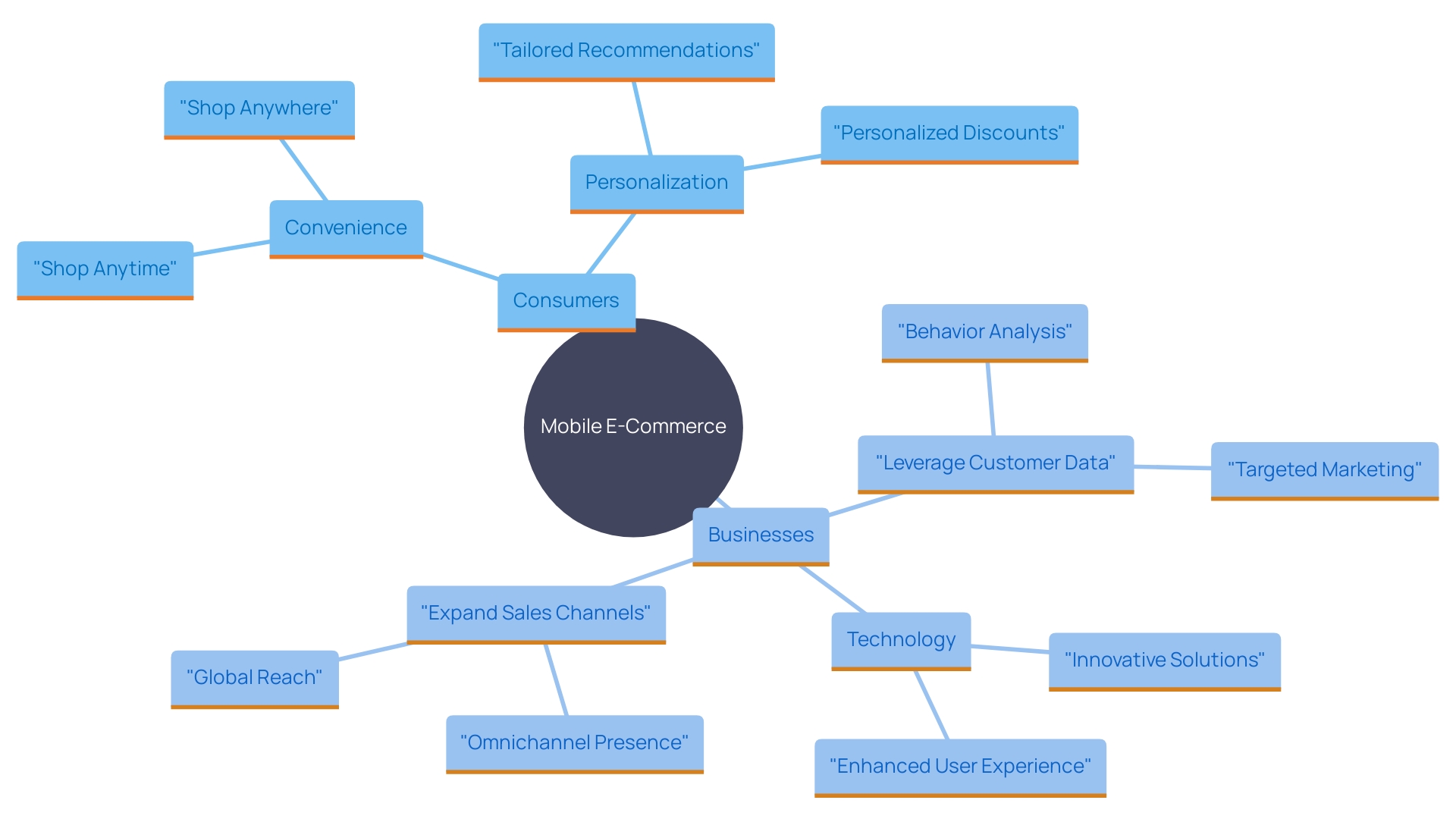
Current Trends in Mobile E-Commerce
The latest trends in online e-commerce underscore the swift advancements in technology and evolving consumer behavior. Enhanced mobile payment solutions, such as contactless payments and biometric authentication, are increasingly emphasized for their security and convenience. Augmented reality (AR) is transforming the retail process by allowing customers to see products in their own surroundings prior to making a purchase. Additionally, social commerce is on the rise as brands harness the power of social media platforms to facilitate direct purchases.
In 2024, over 2.71 billion people are purchasing online globally, reflecting the tremendous growth of e-commerce. This surge is evident in the UK, where e-commerce sales as a percentage of total retail have been climbing since the summer, despite economic challenges. 'Żabka Polska's innovative hybrid store model, combining traditional and autonomous retail, exemplifies the cutting-edge developments in retail technology, offering a 24/7 service powered by AI.
The need for digitally innovative brands is evident, with buyers anticipating smooth, multi-channel purchasing experiences. Industry experts predict that global gaming commerce will become an integral part of this landscape, projected to reach $1065 billion by 2032, transforming gaming platforms into shopping venues. This trend underscores the significance of staying ahead in digital innovation to meet client expectations and drive growth in the e-commerce sector.
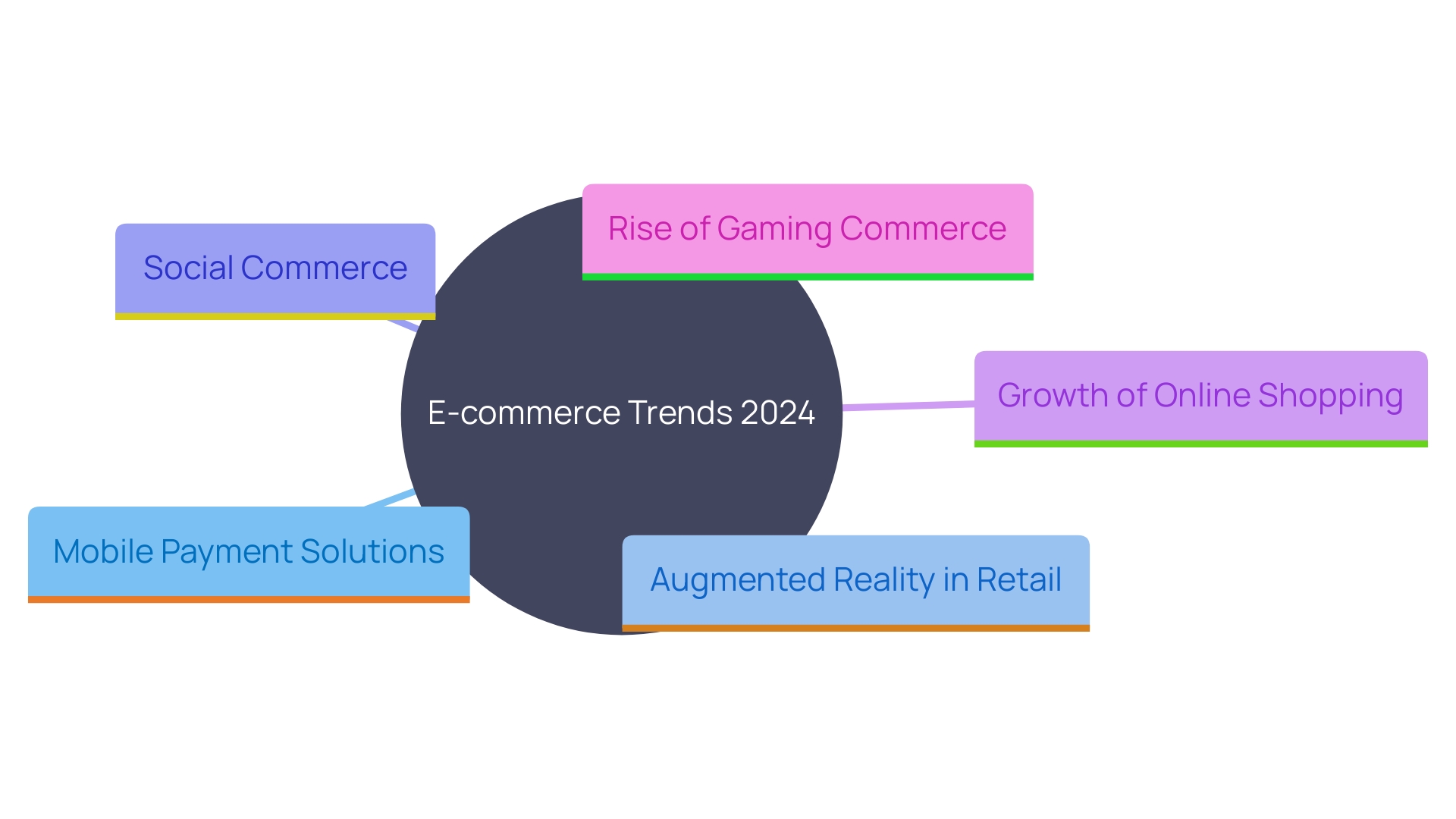
Challenges and Limitations of Mobile E-Commerce
Despite its rapid expansion, Mobile E-Commerce contends with several significant challenges. One primary concern is ensuring robust cybersecurity to protect consumer data, particularly as the industry faces increasing high-profile data breaches. The intricacy of enhancing user interactions across a varied array of devices and operating systems further complicates the landscape. Elevated cart abandonment rates in transactions on portable devices also present a significant challenge for companies.
Additionally, the competitive nature of the market necessitates a strong focus on user experience and customer loyalty. As highlighted by the increasing popularity of mobile billing and the predictions for substantial growth in the mobile payments industry, businesses must adapt quickly. However, the fragmentation of the market, with key players like Ericsson, Google, and Visa, adds another layer of complexity.
Unified commerce remains a challenging goal due to existing legacy systems and the need for cross-functional collaboration among various decision-makers, including CEOs, COOs, and CTOs. Achieving a seamless integration of data and technology is crucial for businesses aiming to succeed in this competitive arena. This sentiment is echoed by the insights from Crew Clothing's transformation, which underscores the importance of a unified platform to connect and leverage data for better decision-making.
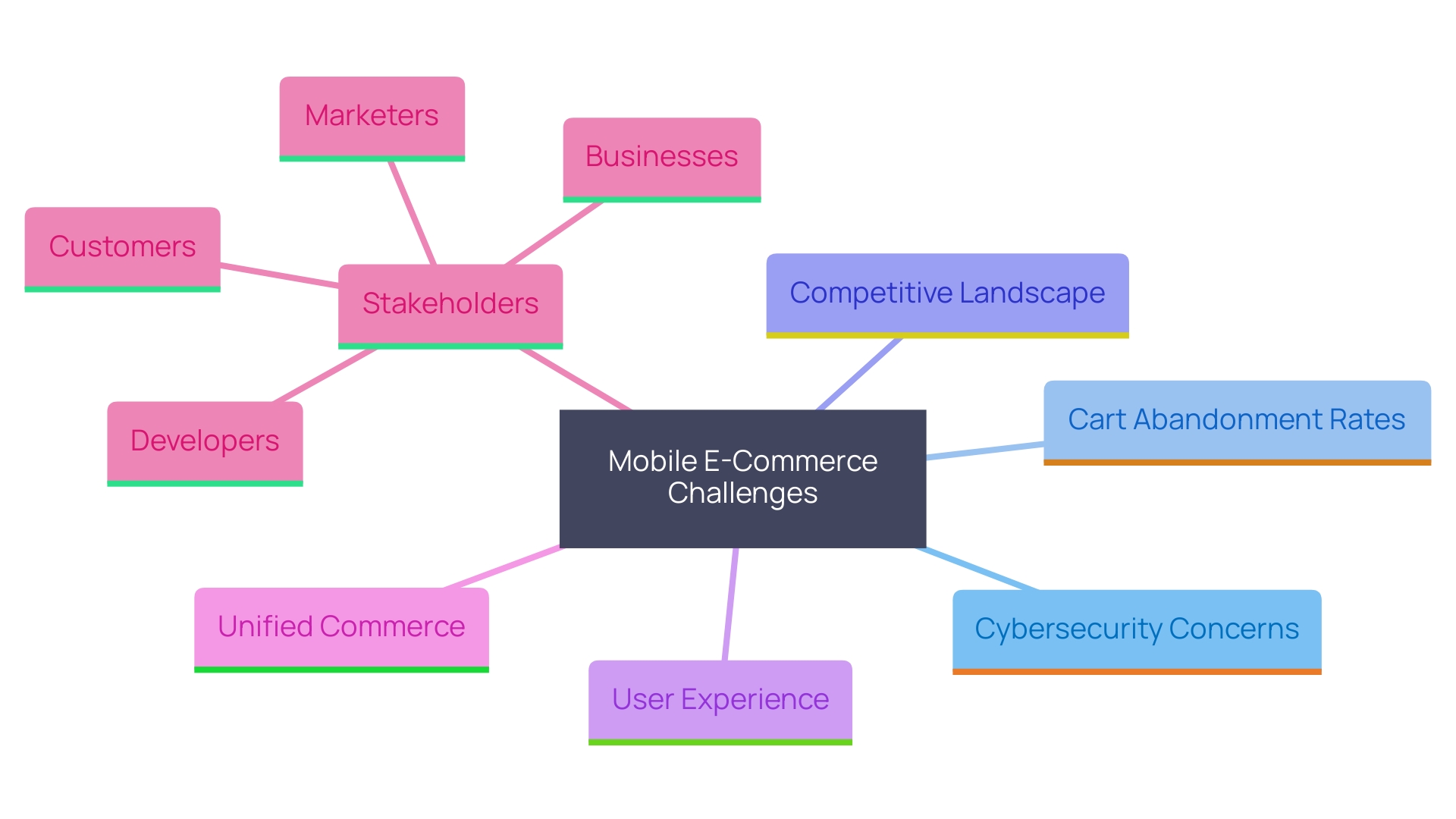
The Role of Mobile E-Commerce in Modern Retail
Mobile E-Commerce is revolutionizing modern retail by transforming how individuals engage with brands and make purchasing decisions. This change is promoting the acceptance of omnichannel retail approaches, seamlessly combining online and offline interactions to satisfy the evolving needs of channel-agnostic shoppers. For instance, Bemol in Brazil has leveraged robust e-commerce alongside its extensive physical presence to overcome logistical challenges in remote Amazon regions, ensuring reliable connectivity and enhancing customer experience.
Retailers like MediaMarkt, Europe's largest electronics retailer, have recognized the need to merge digital and physical realms. Despite the rise in online research and planning, many purchases still occur in-store. This dual approach allows retailers to create a cohesive buyer ecosystem, boosting offline sales through online tactics. The integration of mobile commerce facilitates this by providing a data-rich environment where businesses can refine marketing strategies and adapt to customer preferences.
Creative instances such as Aldi Nord's revamped Shop & Go outlet in Utrecht, driven by computer vision and AI, emphasize the possibilities of M-Commerce in improving the purchasing journey. This store not only repositions product assortments but also revolutionizes the checkout process, illustrating the transformative power of combining technology with traditional retail.
Moreover, the global rise in e-commerce is undeniable, with U.S. retail e-commerce sales reaching $579 billion in the first half of 2024 and expected to hit $1.26 trillion by year-end. This growth underscores the importance of integrating M-Commerce into retail strategies, as consumers increasingly seek seamless, efficient, and engaging shopping experiences. Mobile E-Commerce is not just a trend; it represents a fundamental shift in the commerce landscape, driving innovation and growth across the industry.
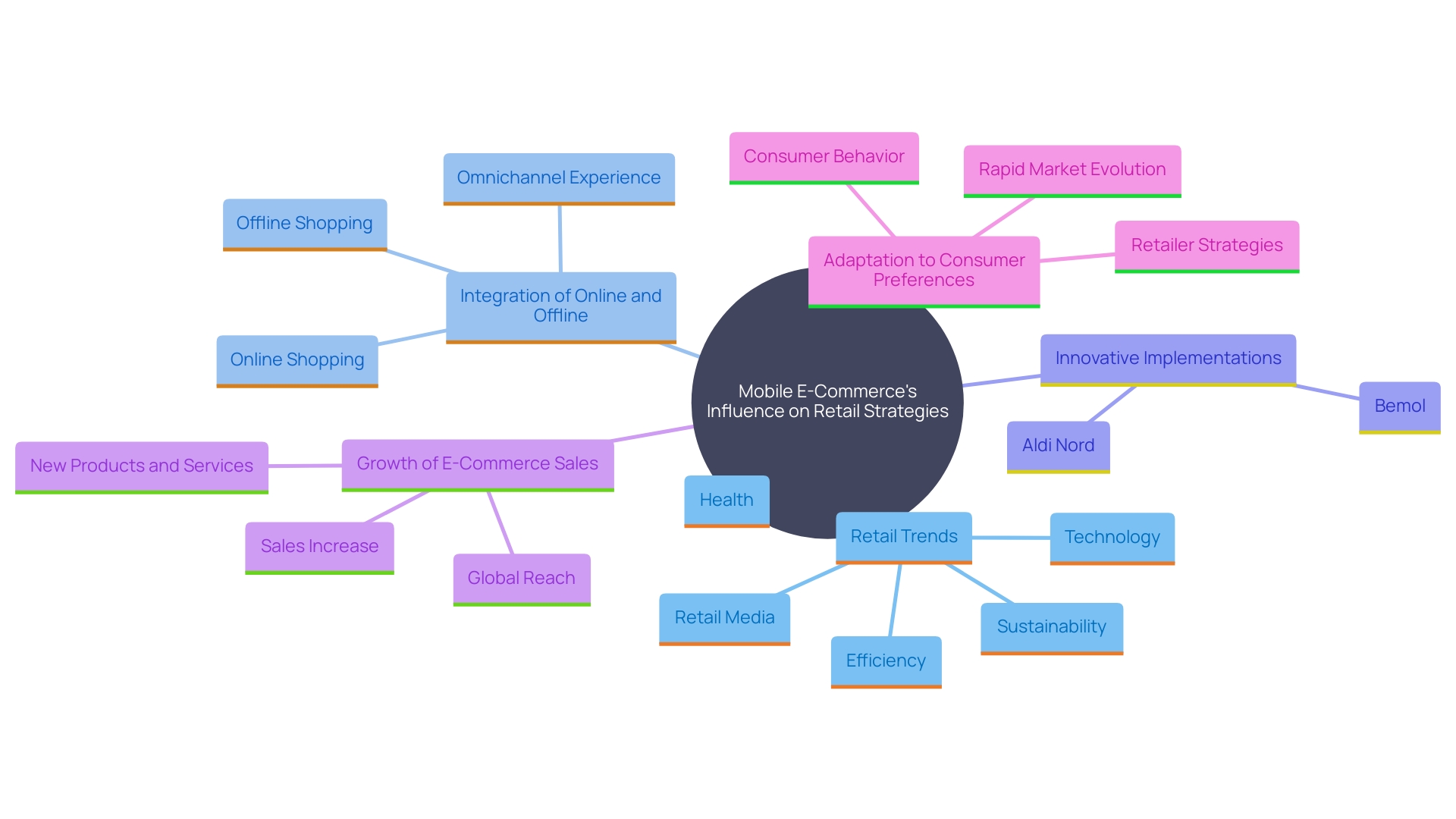
Conclusion
Mobile E-Commerce, or M-Commerce, is reshaping the retail landscape by providing consumers with unparalleled convenience and a seamless shopping experience. Its defining features, such as mobile-optimized applications, intuitive interfaces, and advanced payment solutions, are reshaping how users interact with brands. The integration of technologies like augmented reality and social commerce is further enhancing consumer engagement, making shopping more immersive and personalized.
The benefits of M-Commerce extend beyond convenience; businesses are unlocking new sales channels and leveraging consumer data for targeted marketing. The impressive growth of retail e-commerce sales, projected to reach $1.26 trillion, indicates the necessity for companies to adopt mobile strategies to remain competitive. Innovations like autonomous stores and hybrid shopping models exemplify how technology can enhance customer experiences and foster loyalty.
However, challenges remain. Security concerns, high cart abandonment rates, and the complexity of optimizing experiences across diverse devices are significant hurdles. The competitive market landscape necessitates a focus on user experience and customer retention, while the fragmentation among key players complicates the path to unified commerce.
In conclusion, Mobile E-Commerce is not merely a trend but a pivotal component of modern retail. As it continues to evolve, businesses must adapt to changing consumer preferences and technological advancements to thrive in this dynamic environment. Embracing M-Commerce strategies is essential for retailers aiming to enhance engagement and drive growth in an increasingly competitive marketplace.





